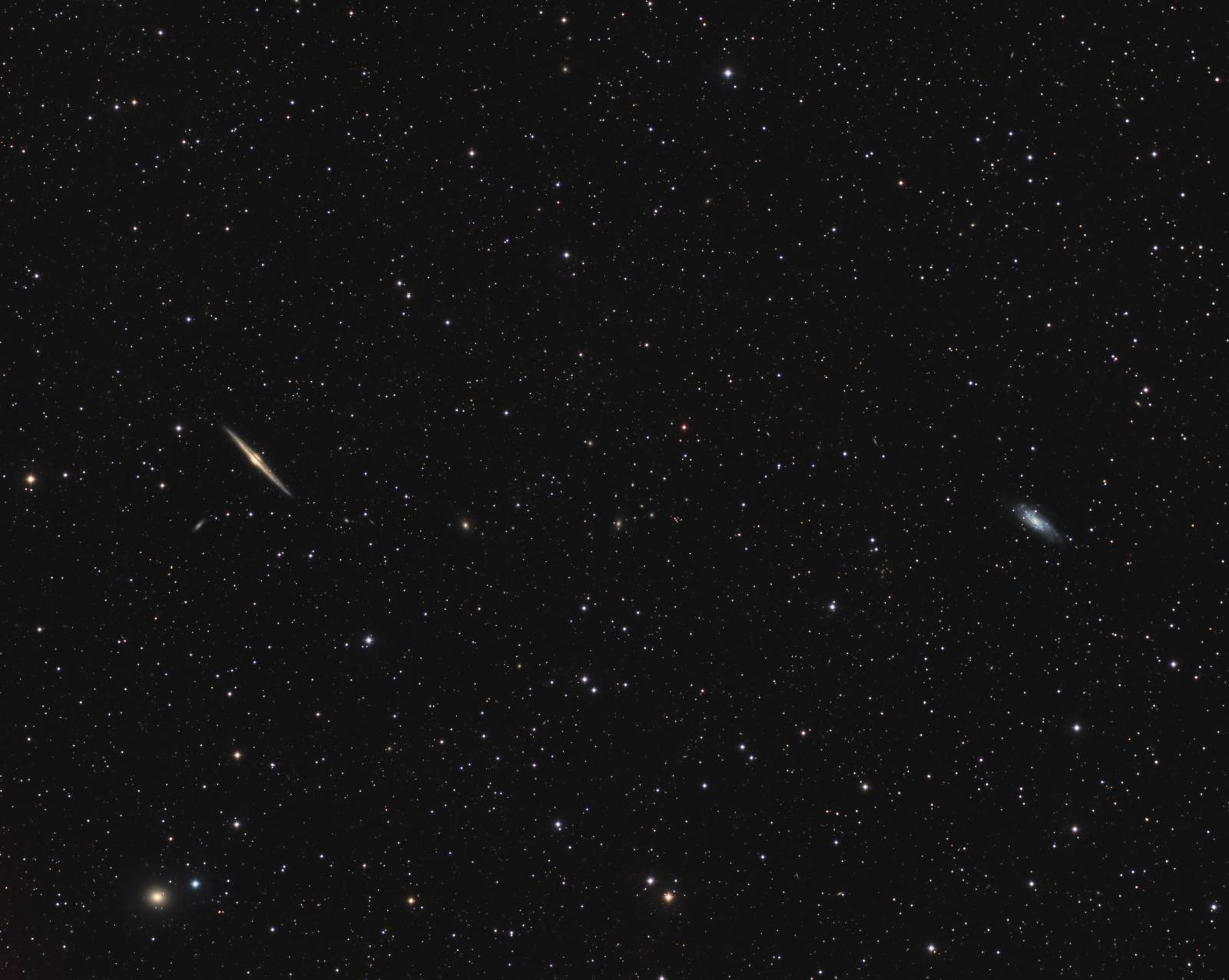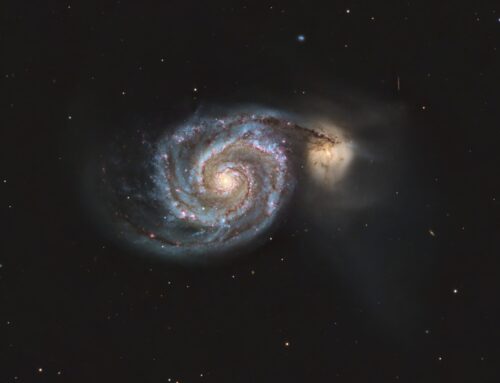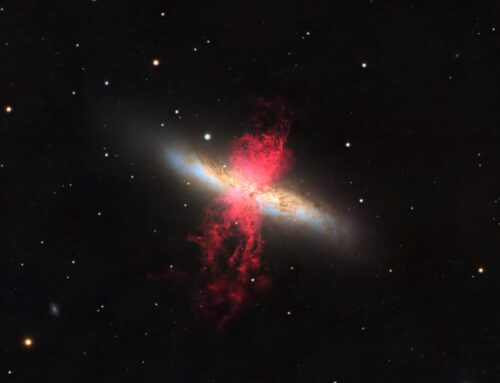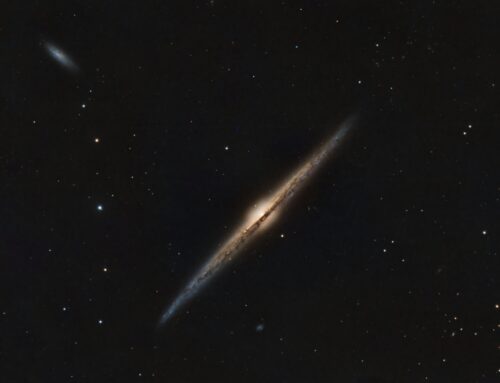NGC 4565, 4494 and 4559
 Click image for full size version
Click image for full size version
May 23, 2018
NGC 4565, a.k.a the Needle Galaxy, is the best known object in this image, and appears at left. It is a beautiful edge-on, likely barred, spiral galaxy that shows a detailed dust lane, a prominent central bulge, and other interesting features. The Needle Galaxy has a retinue of more than 200 globular clusters.
Spiral galaxy NGC 4559 lies near the right edge of this image, and shows nice knotty blue arms and a golden core. NGC 4494 is the prominent elliptical galaxy near the lower left of the image. It hosts a supermassive black hole, with a mass tens of millions times the mass of the Sun.
The three main galaxies in this image all lie at distances in the 30-50 million light year range. There are also hundreds — maybe thousands — of other galaxies in this image. They look like elongated or fuzzy stars. I have posted an annotated image that identifies many of them. The marked and labelled galaxies all belong to the NGC or IC catalogues. The marked but unlabelled galaxies belong to the PGC catalogue. Hundreds of other galaxies in the image are apparently not in any of these catalogues.
Tekkies:
Moravian G3-16200 EC camera, Optolong R, G and B filters, Takahashi FSQ-106 ED IV at f/3.6, Paramount MX. Acquisition with the SkyX unguided. Focused with FocusMax. All pre-processing and processing in PixInsight. Acquired from my SkyShed in Guelph. No moon, average transparency and seeing.
24x10m R, 24x10m G and 23x10m B, unbinned frames (total=11hr50m).
RGB Creation
Creation and cleanup: The BatchPreProcessing script was used to perform calibration, cosmetic correction and registration of all frames. ImageIntegration followed by DrizzleIntegration was used to make the channel masters. The R, G and B masters were cropped and processed separately with DBE, and then combined to make an RGB image which was processed with ColorCalibration.
Linear Noise Reduction: MultiscaleLinearTransform was used to reduce noise in the RGB image. An internal mask was used, with layer settings for threshold and strength as follows: Layer 1: 4, 0.85 Layer 2: 3, 0.75 Layer 3: 2.5, 0.65 Layer 4: 1.0, 0.35 Layer 5: 1.5, 0.2 Layer 6: 1.0, 0.12.
Stretching: HistogramTransformation was applied to the RGB image to make a pleasing, bright image.
Synthetic Luminance
Creation and cleanup of SynthL: The linear R, G and B masters were combined using the ImageIntegration tool (average, additive with scaling, noise evaluation, iterative K-sigma / biweight midvariance, no pixel rejection).
Deconvolution: A star mask was made to use as a local deringing support image. A copy of the image was stretched to use as a deconvolution mask. Deconvolution was applied (80 iterations, regularized Richardson-Lucy, external PSF made using DynamicPSF tool with 30 stars).
Linear Noise Reduction: MultiscaleLinearTransform was used to reduce noise in the SynthL image. An internal mask was used, with layer settings for threshold and strength as follows: Layer 1: 4, 0.75 Layer 2: 3, 0.5 Layer 3: 2.5, 0.45 Layer 4: 1.0, 0.25 Layer 5: 1.5, 0.10.
Stretching: HistogramTransformation was applied to the SynthL to make a pleasing, bright image.
Combining SynthL with RGB
The processed SynthL was applied to the RGB image using LRGBCombine.
Additional Processing
Noise Reduction and Re-Stretch: TGVDenoise was applied in L*a*b* mode with 300 iterations with a range mask used to protect high signal areas. This was followed by a HistogramTransformation to raise the black point (but with no clipping).
Sharpening: MultiscaleLinearTransform was used to sharpen the features of both bright galaxies using a mask to protect other parts of the image. Layer settings for bias and strength were adjusted as follows: Layer 2: 0.4 Layer 3: 0.1.
Correction of Minor Artifacts: Red halos around bright stars were subdued by reducing saturation of red hues targeted using a mask made with the ColorMask script. Slight blotchiness of the background was reduced by increasing the brightness of dark pixels with the PixelMath expression:
iif($T<0.08, $T+0.5(median($T)-$T), $T)
Final Steps: Background, galaxy and star brightness, contrast and saturation were adjusted in several iterations using Curves with masks as required.
Image scale is about 1.6 arcsec per pixel for this camera/telescope combination and Drizzle integration.






Another excellent image.
Very crisp & clean — a very commendable image.
Wonderful, the beauty that is above our heads as we sleep, never ceases to amaze me